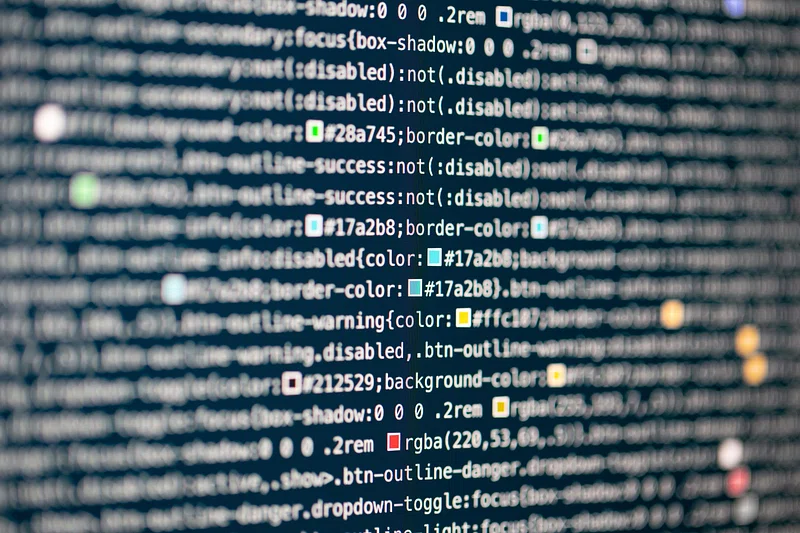In today’s world of software development, coding excellence remains a timeless cornerstone. Writing clear code is not only a good practice, but it also enables others to read your code properly and helps them understand its usage. It’s not only about looks. In 2024, with technology evolving rapidly, adhering to clean coding practices will become even more crucial. In this article, we will discuss certain ways to elevate your code to new heights of cleanliness and efficiency.


1. Embrace descriptive naming of coding excellence
Choosing descriptive names for variables, functions, and classes is paramount for coding excellence. These names act as documentation within the code itself. Well-named entities convey intent and purpose, reducing the need for excessive comments or documentation. For instance, a variable named userAge instantly communicates its purpose more effectively than a cryptic abbreviation like uA.
Descriptive naming not only enhances readability but also ensures that future developers—be it yourself or others—can understand the codebase more easily. It serves as a form of self-documentation, enabling quick comprehension and reducing cognitive load when reading through the code. Use meaningful prefixes and avoid cryptic abbreviations. For instance, opt for getUserData() instead of getUD(), enhancing code comprehension.
2. Modularization and the Single Responsibility Principle (SRP)
Breaking down coding excellence into smaller, focused modules that adhere to the Single Responsibility Principle greatly enhances code readability and maintainability. Each module or function should handle a single task or responsibility. Doing this ensures that the code remains clear and focused on the main idea, reduces complexity, and makes it easier to understand.
When functions or classes do only one thing, they become reusable and easier to test. This modularity encourages a clean and organised codebase, allowing developers to comprehend and modify individual components without affecting the entire system. Aim for concise functions or classes that perform one clear task. If a function does more than one thing, consider refactoring it into smaller functions.
3. Consistent Formatting and Indentation of coding excellence
Maintaining consistent coding excellence, including indentation, spacing, and style, significantly impacts code readability. A uniform coding style across the codebase establishes a visual structure that developers can quickly grasp. Format your code consistently to reduce confusion and make the code more readable. Using tools like linters and automated formatting utilities ensures that the entire team follows the same conventions. This commitment to consistent formatting gives the code a clean and professional appearance, making it easier to understand and maintain.
Click here to Learn coding and programming languages in one go!
4. Comments: Clarity over Obviousness
In programming, comments are lines of text within the source code that are not executed or interpreted by the computer’s compiler or interpreter. Instead, comments serve as descriptive notes intended for readers, including developers. Comments are used to explain the purpose, functionality, or reason why something has been approached in a certain way.
Write comments that elucidate the intent or rationale behind complex code sections. Don’t explain what the code does; instead, explain why. Avoid redundant comments that merely restate the code. Instead, provide context, assumptions, or potential edge cases that clarify the code’s purpose.
5. Testing: Test Early, Test Often for coding excellence
Implementing tests along with code development ensures the reliability of the software. Test-driven development (TDD) encourages writing tests before writing the actual code, ensuring that the code meets specific criteria or behaviours. Tests are documentation that showcases the expected behaviour of the code and serves as a safety net against regressions. Frequent testing catches bugs early in the development cycle, reducing the time and effort required for debugging later on.
6. DRY (Don’t Repeat Yourself) Principle
Adhering to the DRY principle involves eliminating code duplication by encapsulating common functionalities into reusable components. This helps to promote modularity and maintainability, and thus changes will only need to be made in one place. When developers avoid duplicating code, it minimises the chances of inconsistencies or errors within the codebase.
DRY code is easier to maintain and comprehend as it encourages a more efficient and streamlined development process. Functions and modules are great for reducing code redundancy. When you find yourself copy-pasting code, consider abstracting it into a separate function or module to promote reusability.
7. Keep Refactoring a Continuous Process
Refactoring isn’t a one-time task; it’s an ongoing process that involves improving code without altering its external behaviour. Regularly revisiting and refining code enhances its quality, readability, and performance. By changing existing code, developers eliminate redundancy and improve efficiency, making the code more maintainable and adaptable.
Continuous refactoring will promote cleaner and more optimised code, reducing the chances of bugs, and an increase in developer productivity will be seen. Allocate time for refactoring during the development cycle. Small, frequent refactorings are often more manageable and effective than large, infrequent ones.
8. Use meaningful whitespace for coding excellence.
How to build scalable coding- Educate yourselves about the best coding scalability practices.
Effective use of whitespace involves appropriately spacing and formatting code to improve readability. Properly spaced code segments improve visual clarity by separating different blocks of code and improving comprehension. However, excessive whitespace might make the code look ugly, so finding a balance is crucial.
Well-structured whitespace usage aids in distinguishing different parts of the code, making it easier for developers to focus on specific sections while reading or modifying the codebase. Maintain a balance; avoid excessive whitespace that might clutter the code, but ensure enough breathing space for readability.
9. Version Control: Commit Frequently and Write Informative Commit Messages
Version control systems like Git facilitate collaboration and history tracking in software development. Making frequent, smaller commits with descriptive messages provides a clear history of changes made to the codebase. Every time you commit, it will take a screenshot of the project’s state. This helps in understanding the progress of the code and makes it easier for others to join in.
Clear commit messages explain the rationale behind changes, making it easier for developers to comprehend and track modifications over time. Branching and merging effectively further streamline collaboration, allowing teams to work on features or fixes independently while ensuring a smooth integration process. Use branches effectively to isolate features or fixes. This allows for cleaner merges and easier tracking of changes.
10. Staying Updated With Trends
Continuously learning about new coding excellence, methodologies, and tools is crucial in the rapidly evolving field of software development. Furthermore, one should be aware of and regularly participate in coding hackathons and competitions to improve their coding skills. This will also help one engage with other fellow developers and introduce them to new coding practices, trends, and technologies. Now that you have so many tips, you will be able to write efficient code that is clean and neat.
Conclusion
Coding excellence is a necessity. With best practices and tips, you can write code that is not just functional but elegant, maintainable, and scalable. Strive for clean code, as it not only benefits you as a developer but also enhances the overall quality and longevity of the software you create. Engage with developer communities on various platforms and forums like Discord or Reddit, attend conferences, and explore online resources to keep boosting your coding skills and stay updated with the latest trends.
